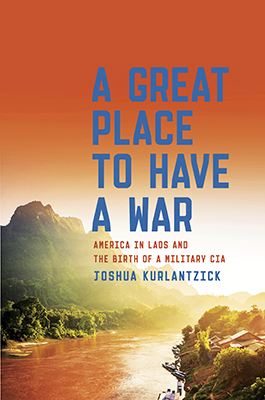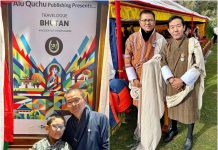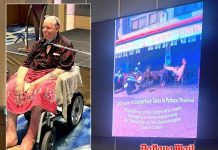“A Great Place to Have a War: America in Laos and the Birth of a Military CIA” (Simon & Schuster), by Joshua Kurlantzick
Even with the hindsight of history, it’s mystifying that 56 years ago when John F. Kennedy was preparing to become president, the fate of the Southeast Asian backwater of Laos was considered critical for America.
Joshua Kurlantzick recounts how the fear of the spread of communism that gave rise to the Vietnam War also led to the secret, devastating U.S. intervention in neighboring Laos, a nation of rice farmers that was cursed by its location on the geopolitical map.
During the presidential transition in 1961, Dwight Eisenhower was advising Kennedy that Laos was the most pressing foreign policy issue facing the United States. The CIA was starting to arm Hmong hill tribe fighters to resist Vietnamese-led communist forces, but what began as a low-budget, guerrilla training mission morphed into a decade-long U.S. bombing campaign bigger than that unleashed on Japan and Germany in World War II.

The story of this highly unconventional war has been told before, but Kurlantzick provides a more complete picture using declassified CIA histories. He also analyzes how the conflict heralded the agency’s support of clandestine, paramilitary operations around the world as a virtual arm of the U.S. armed forces, still characteristic of its role today.
The brisk narrative weaves events in Laos with machinations in Washington, and centers on four key figures.
There is Vang Pao, the dynamic, ruthless Hmong guerrilla leader who commanded up to 30,000 fighters and “could summon death or food in ways that, in Hmong lore, only deities could do.”
His CIA handler, Bill Lair, was a shy Texan with a cool, bookish demeanor, who would rue the escalation of the war that Washington championed as a way of drawing in communist forces that might otherwise have fought Americans on the ground in Vietnam.
Less wracked by guilt was Tony Poe, a hard-drinking, Kurtz-like figure (a character in the 1979 film “Apocalpyse Now”) who trained guerrillas for the CIA. As his grip on reality slipped after years in Laos, Poe would stick the heads of communist fighters on spikes, “like a Southeast Asian Vlad the Impaler.”
Sinister in a different way was Bill Sullivan, the aloof U.S. ambassador who ran the war for four years. He later won the Nixon administration’s respect for his performances at congressional hearings where he lied to lawmakers about the American involvement.
Although the war in Laos failed to stop the communists, who remain in power, and left a staggering harvest of deadly, unexploded bombs, CIA chiefs considered the operation a success. Kurlantzick concludes that it also set a troubling precedent in allowing American presidents to conduct war in secrecy. (AP)




